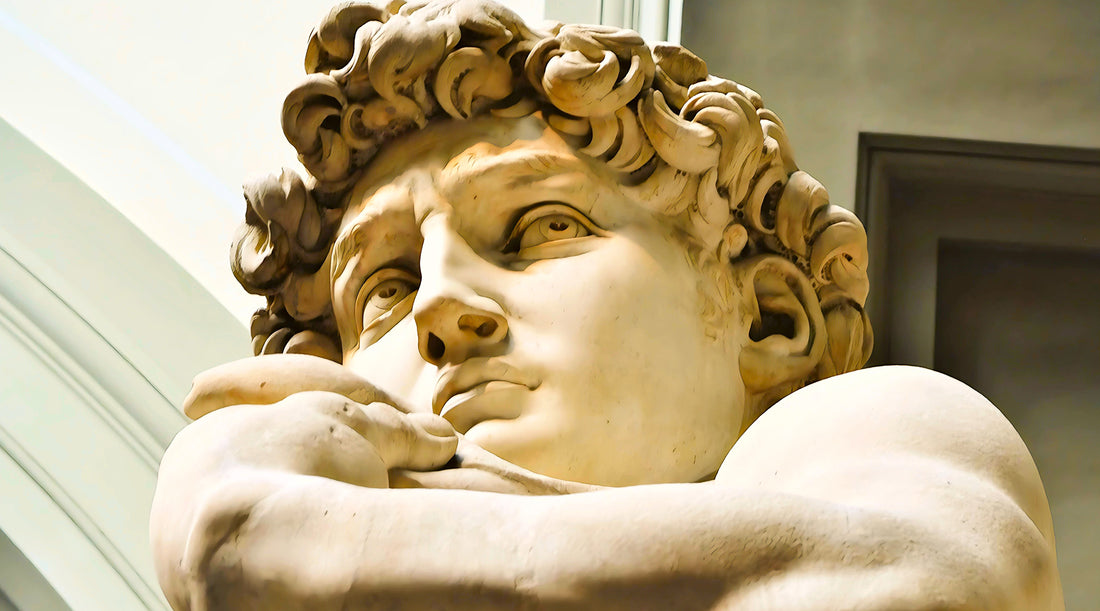
Michelangelo (1475 – 1564)
Michelangelo di Lodovico Buonarroti Simoni, commonly known as Michelangelo, was a Renaissance polymath born in 1475 in Caprese, Italy. While Michelangelo's sexual orientation is a topic of speculation, there is no definitive historical evidence confirming his homosexuality. The societal norms of the time, coupled with the artist's private nature, make it challenging to ascertain details about his personal relationships. However, various aspects of Michelangelo's life and works have led scholars to explore the possibility of his queerness.


Michelangelo's artistic brilliance is best exemplified by masterpieces such as the statue of David, the Sistine Chapel ceiling, and The Last Judgment. His depictions of the male form in these works, characterized by muscularity and grace, have prompted discussions about the potential homoerotic undertones in his art. The exploration of the male body, often idealized and sensuous, has led some scholars to interpret Michelangelo's work through the lens of queer aesthetics.


Michelangelo: Artist & Genius | Full Documentary | Biography

Michelangelo's extensive correspondence, particularly his passionate letters to Tommaso dei Cavalieri, a young nobleman, has fueled speculation about his sexuality. The letters, marked by expressions of deep affection, admiration, and longing, offer glimpses into the artist's emotional life. Michelangelo's feelings towards Cavalieri, while open to interpretation, demonstrate intense emotional connections that transcend conventional notions of friendship.
"To know each other is the best way to understand each other. To understand each other is the only way to love each other." - Michelangelo
The artist's friendships with other men, such as the poet Luigi del Riccio and the young nobleman Cecchino dei Bracci, have also been scrutinized. Michelangelo's intense attachments and the emotional language used in his letters to these individuals contribute to the ongoing debate about the nature of his relationships and, by extension, his sexuality.
The Renaissance was a period that celebrated classical ideals, and the revival of interest in ancient Greek and Roman cultures included a fascination with homoerotic themes. Artists and intellectuals of the time, including Leonardo da Vinci and Donatello, explored expressions of same-sex desire in their works. While Michelangelo lived in this cultural milieu, the prevailing societal attitudes of the Catholic Church and the broader Italian society would have necessitated discretion regarding one's sexual orientation.
The 10 Most Famous Works of Art by Michelangelo | Michelangelo's Most Famous Art


Discussions about Michelangelo's potential queerness highlight the complexities of studying historical figures through a modern lens. The concept of sexual orientation as understood today did not exist during the Renaissance, making it challenging to apply contemporary labels to individuals of that era. Michelangelo's legacy endures primarily through his unparalleled contributions to art, and interpretations of his sexuality add layers to the ongoing exploration of identity, desire, and artistic expression across different historical periods.

Our Spartan Pride T-Shirts & Jersey Tanks
We're soldiers, scientists, politicians, business owners, artists & entertainers. We're fighters with a rich history of significant contributions to all our cultures. Our pride shirts display this, each with a name and the contributions of the individual. There is no shame in being LGBTQIA+ just an enormous celebration that you are authentic and fearless. "You've always been in good company." Walt & Pete
Michelangelo | Italian Sculptor & Painter | Pride T-Shirt

Michelangelo | Italian Sculptor & Painter | Pride Jersey Tank


